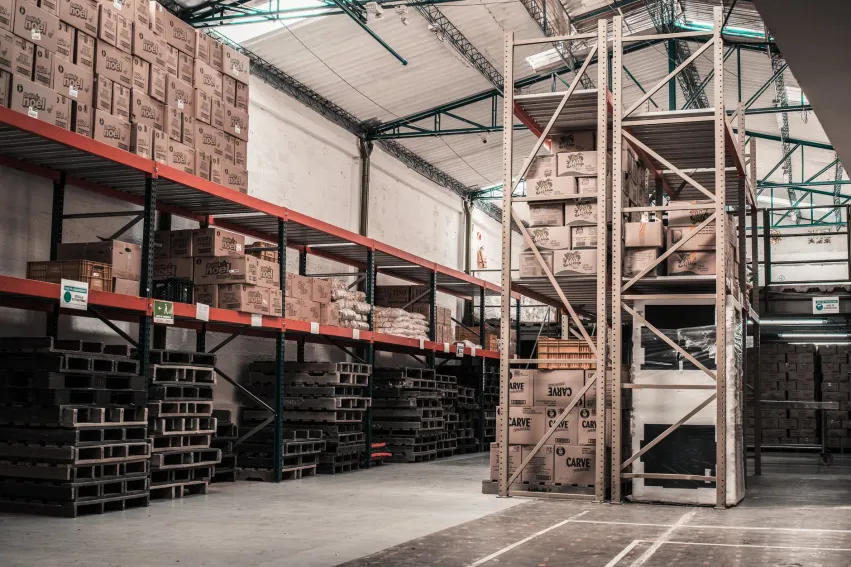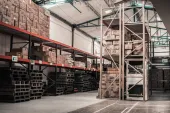
Singapore industrial leasing transactions up 2.3% to 10,705 in 2020
The 1.4% dip in warehouse leasing volume was outweighed by the increases in single- and multiple-user factories.
A recent report by Savills notes that in Q4/2020, the economy contracted by 2.4% YoY, moderating from the 5.8% contraction in Q3/2020. This was largely attributed to the 10.3% YoY expansion in the manufacturing sector, extending the 11% growth in Q3. The growth was led by output expansion in the electronics, biomedical manufacturing, precision engineering and chemicals cluster.
Nevertheless, the COVID-19 pandemic still took a toll with Singapore’s economy contracting by 5.4% in 2020, a reversal from the 1.3% expansion in 2019. However, the manufacturing sector posted growth of 7.3%, in contrast to the 1.5% contraction in 2019. This was supported by expansion in the biomedical manufacturing, electronics and precision engineering clusters, arising from strong demand for pharmaceutical products, semiconductors and semiconductor manufacturing equipment respectively.
Here’s more from Savills:
With the pickup in manufacturing demand following the reopening of the economy, the manufacturing sector ended on a positive note in 2020. In December, the overall Purchasing Manager’s Index (PMI) remained in expansionary mode for a sixth straight month. Similarly, manufacturing output grew by 14.3% YoY in December, bringing overall growth to 7.3% in 2020. The expansion in December was supported by electronics, chemicals and precision engineering. On the other hand, after an increase of 6.5% in Q3/2020, non-oil domestic exports (NODX) recorded a 0.5% YoY decline in Q4/2020. Nevertheless, NODX expanded by 4.3% in 2020, a reversal from the 9.2% drop in 2019. Despite global economic uncertainties, the overall growth in 2020 was led by increased shipments of electronics and non-electronics products.
Rental market
Following the spike in industrial leasing activity in Q3/2020, the momentum continued into Q4/2020, with leasing volume increasing by 17.2% YoY to 2,913 transactions. For the whole of 2020, despite the pandemic, leasing transactions expanded by 2.3% to 10,705 transactions. While leasing volume in warehouses fell by 1.4%, it was outweighed by increases in leasing transactions of both single-user and multiple-user factories. For multiple-user factories, the higher rental volume may be attributed to higher supply of such properties. Nevertheless, in general, leasing demand largely emanated from e-commerce (including e-sports), central kitchens and precision manufacturing, which have been the trending sectors since the pandemic began.
The overall industrial vacancy rate eased further in Q4, decreasing by 0.3 of a percentage point (ppt) QoQ and 0.7 of a ppt YoY to 10.1%. This is the lowest level recorded since Q1/2016 when the vacancy rate was 9.9%. The decrease in vacancy rate can be attributed to resilient demand for industrial space amid limited new supply arising from construction delays due to the pandemic. Among the property types, the largest YoY drop in vacancy rate was most evident in warehouse (-1.9 ppts), followed by multiple-user factory (-1.0 ppt). The stable occupancy rate for both property types can be attributed to the proliferation of e-commerce companies, remote working and rising demand for semiconductors due to the roll-out of 5G.
JTC’s rental indices inched up marginally by 0.1% QoQ in Q4/2020, but on a YoY basis, it fell 1.5%. For Savills’ basket of industrial properties, the average monthly rent for prime multiple-user factories declined for the fifth consecutive quarter by 0.9% to S$1.70 per sq ft. On the other hand, the average monthly rent for prime warehouse and logistics properties continued growing, rising by 1.1% QoQ to S$1.43 per sq ft in Q4 after a 0.9% increase in Q3. This was due to sustained demand for last-mile delivery facilities which corresponded with the boom in e-commerce and also stockpiling needs as companies build buffers against disruptions. Additionally, as more COVID-19 vaccines arrive in Singapore, they add an additional source of demand for storage space. Cold store logistics warehouses are therefore expected to be sought after, supporting rental growth.
Sales market
In the strata sales market, following a spike in strata sales volume in Q3/2020, strata sales inched up marginally by 0.8% QoQ to 369 in the final quarter of 2020. Despite the increase in sales volume for 2H/2020, it was insufficient to outweigh the decline in sales volume for 1H, leading to a 2.2% YoY fall in 2020. This was the first decrease after two consecutive years of growth. While strata sales volume of multiple-user factories and warehouses contracted, strata sales of single user factories grew on a YoY basis.
The resilient demand for industrial space in Q4/2020 was refl ected in the JTC price index which showed that overall industrial prices rose by 1.0% QoQ. This was a turnaround after four consecutive quarters of decline. However, on a YoY basis, prices are still down by 2.7% in 2020, a larger drop than the 0.3% fall in 2019. From the Savills’ basket of leasehold industrial properties, prices continued to decrease in Q4, albeit a slower pace. Prices for 60-year and 30-year leasehold properties fell by 0.2% and 0.6% QoQ to S$424 per sq ft and S$299 per sq ft respectively. On the other hand, due to limited supply, prices of freehold industrial properties remained strong, rising for a fi fth consecutive quarter with an increase of 0.8% QoQ in Q4/2020 to S$700 per sq ft. The lower supply also resulted in reduced transaction volumes.
Business park and high-spec industrial space
Net demand improved in Q4/2020 with a rise in demand in the Central Region outweighing the drop in the East Region. This led to the islandwide vacancy declining 0.4 of a ppt QoQ to 14.2% in Q4/2020. However, this was still higher than the 13.8% recorded in Q4/2019. Out of the regions, the vacancy rate in both the Central and West Regions posted QoQ declines of 0.7 of a ppt and 0.2 of a ppt respectively while the East Region grew by 0.4 of a ppt QoQ. The improvement in both the Central and West Regions was seen in the newer business park clusters such as Mapletree Business City, one-north and Cleantech Park, which registered increases in occupancy rates.
However, business parks such as International Business Park and Changi Business Park have been affected due to their location and age. The business park sector was resilient with limited new supply and demand emanating from the technology, media and telecommunications sector. While the JTC rental index for business parks inched up slightly by 0.1% QoQ in Q4 after two consecutive quarters of decline, the average monthly rent in Savills’ basket of prime business park properties remained unchanged at S$5.81 per sq ft. On the other hand, the average monthly rent of Savills’ basket of standard business park properties6 declined for a third consecutive quarter by 1% QoQ to S$4.01 per sq ft as landlords have been more realistic with their rental expectations in order to maintain occupancy.
For high-spec industrial properties, demand remains strong and is expected to stay healthy in line with the thriving technology, biomedical and electronics sectors. After two consecutive quarters of decline, the average monthly rent for Savills’ high-spec industrial basket7 grew by 0.9% QoQ to S$3.50 per sq ft in Q4/2020. Demand from these segments remains high as Singapore progresses to higher-value manufacturing.
Also, with limited new supply, rents are expected to remain strong. Amongst the range of high-spec buildings, the newer and better-located ones are performing well. To meet the needs of occupiers from emerging and trending industries, landlords are undertaking asset enhancement works. As an example, AEI works are scheduled for 61 and 63 Alexandra Terrace to become a high-spec industrial building, providing a lifestyle and wellness-oriented business environment for users.
Outlook
At the end of 2020, the International Monetary Fund (IMF) revised its 2021 forecast of global economic growth upwards by 0.3 of a ppt from its previous forecast to 5.5% in 2021. In 2022, the global economy is projected to grow by 4.2%. Similarly, with Singapore’s COVID-19 situation largely under control and the vaccination programme currently underway, the Monetary Authority of Singapore (MAS) expects a gradual recovery over the course of 2021, with GDP growth forecast at 4.0% to 6.0%. The manufacturing sector is forecast to grow at an even faster rate than previous projections due to strong semiconductor demand from the 5G and automotive markets.
The importance of the manufacturing sector to Singapore’s economy is also evident with the introduction of a new 10-year plan which aims to expand the sector by 50% and maintain its share of around 20% of GDP. As such, instead of lowering production or labour costs, the manufacturing sector must hone its competitiveness through innovation and the production of higher-value products, hence the need to focus on sub-sectors such as advanced manufacturing.
As construction work resumes, there will likely be a surge in pipeline supply in the near term as the backlog from 2020 gradually gets completed. While demand drivers such as e-commerce and logistics are expected to continue trending, it is yet to be seen whether demand for space from these sectors will be sufficient to absorb upcoming completions. Despite some positive economic sentiment alongside hopes of containing the pandemic, uncertainties persist and industrialists are expected to remain cautious with their spatial needs as Singapore is very dependent on international trade.
Hence, rental growth is expected to remain depressed, particularly for factories. For warehouses, apart from increasing demand from e-commerce and stockpiling needs, cold chain logistics may become another demand driver as Singapore aims to become a COVID-19 vaccine distribution hub for the region.



















 Advertise
Advertise




